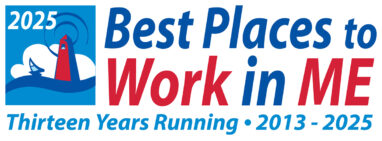The effects of the COVID-19 crisis brought an end to the longest run of economic expansion in US history. The construction industry has been on a slow rise since the record lows we saw following the 2008 recession. In terms of share of GDP, construction market growth has been hovering around 4% for the past 4 years. But that steady industry climb that began in 2013 was enough for some construction business owners to become a little too complacent. Oversight of certain operational matters may have become less vigilant, making the economic hit from COVID-19 a hard one to take for some contractors.
Contingency planning and strategy are important, even mid-crisis. This isn’t the time to “hunker down” or “wait it out.” With postponed and canceled projects, labor shortages, vendor and supply chain constraints, rising costs, and general unsettledness with the current state and future outlook of the economy, now is the time to take action and reevaluate your current business model and strategy.
This is the first part of a two-part series which outlines key considerations for construction companies navigating an uncertain economy. In Part I, we want to take a look at the basics that keep construction businesses on track for short and long-term success.
Maximize cash flow
A lot can be said for adequate cash flow, in both good times and down times. Review your assets and determine whether anything may be liquidated for cash, keeping in mind this may be through a sale, an exchange, or even leasing back the asset.
Stay on top of your contracts receivable and accounts payable. It is best practice to review aging summary reports, at least weekly, to take corrective or preventive action when necessary. With many construction costs paid in advance, monitoring billing and receipt of payment takes on a higher level of importance in maximizing cash flow.
If possible, delay any capital additions, such as pre-planned expansions and large equipment purchases. For unavoidable acquisitions, look carefully at the cost of financing such equipment in comparison to your expected short-term and long-term return on the investment. Explore other avenues, such as purchasing used equipment, when evaluating your available options.
Be proactive in surety and bank communications. Maintaining your bonding relationship with a surety requires you to be transparent. Letting them know up front when things aren’t great is far favorable to an unexpected, after-the-fact presentation. And consider meeting with your bank to discuss lending options or wrapping your existing equipment loans into a consolidated loan. We encourage businesses, to any extent possible, to maintain and seek flexibility in the terms set for any current and new financial obligations. Also, look into requesting an increase in your line of credit for liquidity needs.
Minimize costs
It’s important to closely monitor operating and financial costs, not just sales and revenue. And, in times of uncertainty, it’s crucial to eliminate non-essential expenses, or discretionary spending.
In a crisis, some companies immediately jump to cuts in labor or wages, but consider your entire personnel model carefully before making broad cuts. Keep employee morale at the forefront of your planning efforts. Sweeping cuts to employees, their pay, or their incentives affect their job performance and, ultimately, your success.
Start by eliminating underperformers. Keep in mind things like combining roles and/or responsibilities, whether you should outsource, whether you can keep employees if you reduce the work week, or whether a furlough is the best option. And when reviewing incentive programs, employee benefit programs, and executive pay for possible adjustments, legal guidance should be sought prior to making such adjustments.
In assessing alternative areas for discretionary spending cuts, consider your expenses for travel, overnight delivery, and meals. Pay close attention to things like employee expense claims, ensuring they do indeed fall under your company policy for reimbursement, and restrict company use of vehicles to business travel only.
Review your contract obligations. This should, of course, be done regularly for risk mitigation purposes, but take a look with the intention of ensuring you are getting the best value possible on things like technology costs, utilities, and equipment leasing. Call on your vendors and suppliers. You may be able to renegotiate a better price. And if you can’t, shop around for the best price.
Don’t underestimate your employees’ abilities in this arena. Get them involved in minimizing costs whenever you can. Ask Project Managers, for example, to identify ways to avoid waste. Some companies are creating “Cost Savings” teams, with an employee from each department representing that group’s ideas and suggestions on areas where there are opportunities to save.
Review procedures, like job costing, for opportunities to increase productivity
In times of economic challenge, business owners need to take a hard look at their company’s operations and procedures. Review these areas for missed opportunities that increase efficiency. One of these procedures that can truly make or break a construction company, depending on its overall efficiency, is job costing.
Jobs need to generate enough revenue to exceed your costs and remain in line with competitor pricing. Your company should have a job costing system based on cost codes that break projects down into phases or divisions. It should break down these phases or divisions further yet into the associated material, labor, and the overhead cost allocated on a per-job basis. With accurate job costing, your data on actual costs can be compiled over time, allowing you to make subsequent estimates with greater accuracy and less risk and to analyze job profitability and performance.
Tracking changes in these costs at the micro level allows you to make necessary pricing adjustments at the macro level, to account for things like increases in suppliers’ pricing, COVID-19 related costs, and additional labor and equipment costs. So you’re able to make adjustments before taking a loss. Your job costing system should also capture scheduling and delay costs in a timely manner to prepare for possible future claims.
Because you are able to track projects in real-time, job costing software makes accounting for change orders easier. It also allows you to see what projects are more profitable, so you may expand where you see the most profit, or shut down bidding on underperforming types of projects, as necessary.
Stay tuned for Part II, and contact us with any questions
Part II of this series is coming soon. We’ll take a look at additional considerations for keeping your company on a path for success.
ARB’s Construction & Real Estate Services Group is committed to your industry. We provide specialized services, including job costing, overhead cost calculations, profitability analyses, software selection and implementation, and preparing forecasts and projections. We’re here to help you maximize profitability and reduce risk. Contact us today to get started. We also encourage you to visit our COVID-19 Financial Resource and Tax Center for additional information on related tax and financial matters.
by David Jean, CPA, CCIFP, CExP





